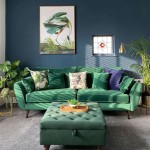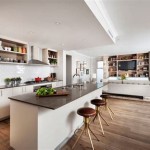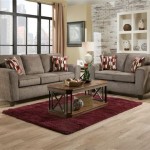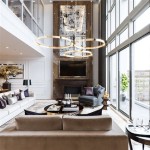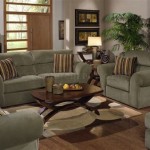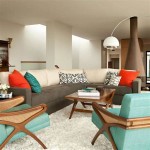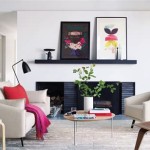Creating a Functional and Stylish Home Office Living Room Combination
The modern lifestyle frequently necessitates the convergence of various living spaces within a single footprint. The home office living room combination has emerged as a prevalent adaptation to this demand, particularly for individuals who work remotely or require a dedicated workspace within their existing home environment. This combination presents both opportunities and challenges, requiring careful planning and execution to ensure both functionality and aesthetic harmony. The key to a successful home office living room combination lies in balancing the professional requirements of a workspace with the comfort and relaxation associated with a living area. Consideration must be given to factors such as space allocation, noise management, storage solutions, and overall design coherence.
Effectively integrating a home office into a living room requires a strategic approach that considers the existing dimensions and layout of the space. The goal is to create distinct zones for work and leisure without compromising the visual appeal or functionality of either area. This can be achieved through a variety of design techniques, including the use of furniture placement, area rugs, and strategic partitioning. Understanding the specific needs of the user is crucial; someone who requires extensive storage will have different requirements compared to someone who primarily utilizes a laptop. The specific nature of the work being performed will also influence design choices, with creative professions often benefiting from a more inspiring and visually stimulating environment.
Defining Zones and Spatial Separation
One of the primary challenges in creating a home office living room combination is defining distinct zones for work and relaxation. Without clear demarcation, the risk of distractions and blurred boundaries between professional and personal life increases. Several effective strategies can be employed to create visual and physical separation.
Furniture arrangement plays a crucial role. Strategically positioning large pieces of furniture, such as bookshelves, sofas, or room dividers, can effectively create a barrier between the office area and the living space. This can visually separate the zones and provide a sense of privacy for the work area. Consider using a bookcase with an open back to allow light to pass through while still providing a degree of separation.
Area rugs are another useful tool for defining zones. Placing a rug under the desk and office chair can visually designate the workspace, while a separate rug in the living area will further reinforce the distinction. The rug can also contribute to sound absorption, helping to minimize noise in the office area.
Consider incorporating a screen or room divider as a more substantial barrier. Folding screens offer flexibility and can be easily moved or stored when not needed. More permanent solutions, such as a partial wall or a custom-built shelving unit, can provide a greater degree of separation and storage space. Glass partitions can also be used to create a sense of separation without completely blocking light or visual connection.
Utilizing paint and color can further emphasize the separation of zones. A different color palette for the office area can visually distinguish it from the living space. Consider using calming and focused colors in the office area, such as blues or greens, and warmer, more inviting colors in the living area.
Optimizing Storage and Organization
Effective storage and organization are essential for maintaining a functional and uncluttered home office living room combination. A disorganized workspace can lead to distractions, decreased productivity, and a negative impact on the overall aesthetic of the living room. Prioritizing storage solutions that are both practical and visually appealing is paramount.
Built-in storage solutions can be particularly effective in maximizing space and creating a cohesive look. Custom-built shelving units can be designed to fit the specific dimensions of the space and provide ample storage for books, documents, and office supplies. Consider incorporating closed cabinets to conceal less visually appealing items and maintain a clean and organized appearance.
Floating shelves offer a more minimalist approach to storage and can be used to display decorative items as well as office essentials. These shelves can be arranged in a variety of configurations to create visual interest and maximize wall space. Consider using baskets or decorative boxes to organize smaller items on the shelves.
Multi-functional furniture is another valuable asset for maximizing storage in a limited space. A coffee table with built-in storage compartments can provide a convenient place to store magazines, remote controls, and other living room essentials. Similarly, an ottoman with storage can serve as both a footrest and a storage container for blankets or pillows.
Vertical storage solutions are particularly important in smaller spaces. Utilize wall-mounted organizers, such as file folders, whiteboards, and pinboards, to keep important documents and information readily accessible without taking up valuable desk space. Consider using a pegboard system to customize storage for a variety of office supplies.
Pay attention to cable management to minimize clutter and maintain a clean and organized workspace. Use cable ties, sleeves, or organizers to bundle and conceal cables from computers, printers, and other electronic devices. Consider using a power strip with surge protection to protect your equipment and simplify cable management.
Balancing Aesthetics and Functionality
Creating a successful home office living room combination requires a balance between aesthetics and functionality. The space should be visually appealing and comfortable while also providing a practical and efficient workspace. Attention to detail in terms of lighting, ergonomics, and décor is crucial.
Proper lighting is essential for both productivity and ambiance. Natural light is ideal, but if it is limited, supplement it with artificial lighting. Use a combination of ambient, task, and accent lighting to create a well-lit and visually appealing space. Task lighting, such as a desk lamp, is crucial for providing focused illumination for work activities. Ambient lighting, such as overhead fixtures or floor lamps, can provide general illumination for the entire room. Accent lighting, such as wall sconces or picture lights, can highlight specific features and add visual interest.
Ergonomics are crucial for maintaining comfort and preventing injuries while working. Invest in an ergonomic chair that provides adequate lumbar support and adjustable height. Position the computer monitor at eye level to prevent neck strain. Use a keyboard and mouse that are comfortable and ergonomically designed. Consider using a standing desk or a desk converter to alternate between sitting and standing throughout the day.
Incorporate décor that reflects personal style and creates a positive and inspiring work environment. Add plants to bring a touch of nature into the space and improve air quality. Display artwork or photographs that are personally meaningful. Use decorative accessories, such as vases, candles, or sculptures, to add visual interest and personality. Ensure that the décor complements the overall aesthetic of both the office area and the living room.
Choose furniture and accessories that are both functional and aesthetically pleasing. Select a desk that is the appropriate size for the space and provides adequate workspace. Choose storage solutions that are both practical and visually appealing. Consider using furniture with clean lines and a neutral color palette to create a cohesive and versatile space.
Soundproofing measures can be implemented to minimize distractions and improve focus. Consider using acoustic panels, thick curtains, or soundproof blankets to absorb sound and reduce noise levels. Placing a rug on the floor can also help to dampen sound. Using headphones or noise-canceling earbuds can further help to isolate from distractions.
By carefully considering these factors, it is possible to create a home office living room combination that is both functional and stylish, providing a dedicated workspace without compromising the comfort and aesthetics of the living area.

Office In Living Room Pick My Presto

Hdb Mnh All About That Space Multifunctional Living Room Ideas

Home Office Plus Living Room Combo Mf Tv

Creating The Perfect Home Office Amazing Design Ideas Urbanist Architecture Small Company London

Before After Swanky Home Office Lounge Ideas Decorilla Online Interior Design

8 Expert Design Tips For Your Luxury Home Office The Cliffs Private Communities In South And North Carolina

Home Office Trends 2025 Create A Stylish Productive Space Decorilla Online Interior Design

Small Home Office Design Two Plans Shabbyfufu Com

Space Sharing Ideas For Multi Use Rooms

My Home Office Makeover Reveal Sanctuary Decor

